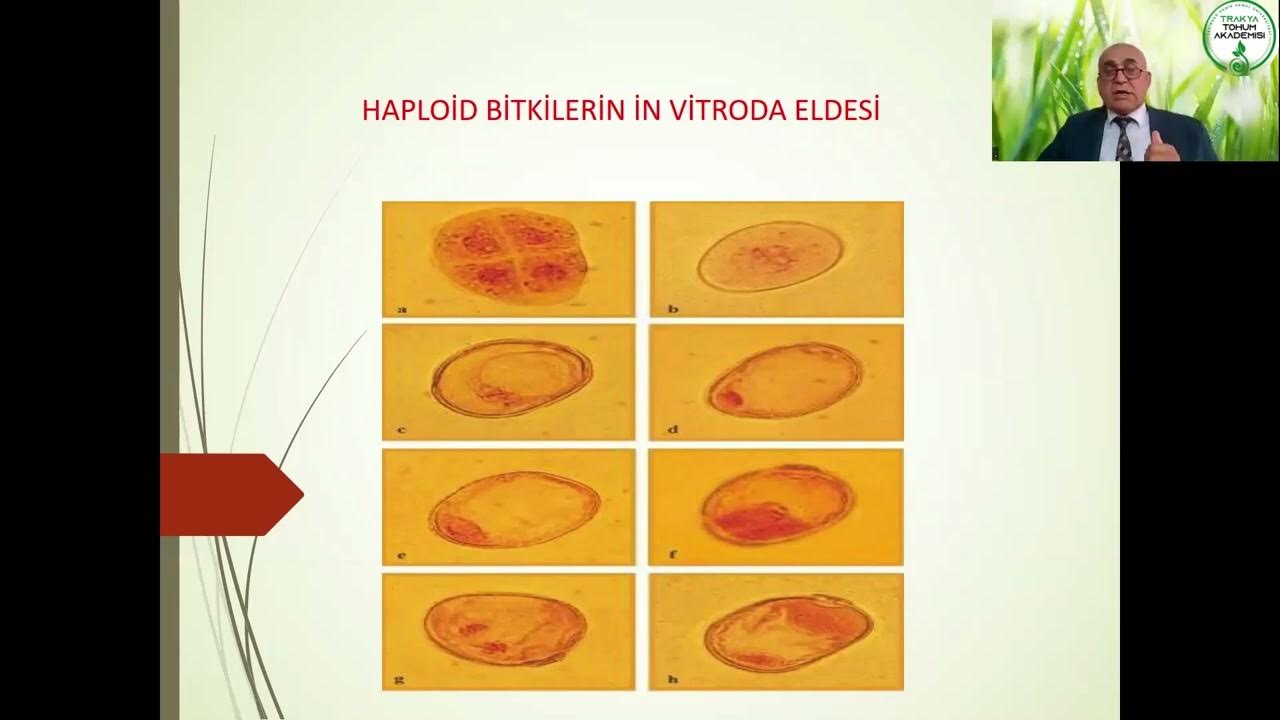Tissue Culture
Summary
TLDRThe video discusses the technique of tissue culture in plant breeding, highlighting its efficiency in propagating improved crops. Tissue culture involves growing plant cells or tissues in vitro under sterile conditions, allowing for large-scale production of genetically identical plants. This method, also known as micropropagation, offers advantages such as growing disease-resistant varieties, multiplying seedless plants, and recovering healthy plants from diseased ones. The process includes steps like cutting plant tissue, placing it in nutrient mediums, and regenerating new plants, proving essential in horticulture and agriculture.
Takeaways
- 🌱 Tissue culture is an efficient tool used in plant breeding to propagate improved crops.
- 🔬 Tissue culture involves growing cells or tissues in vitro under aseptic conditions using an artificial medium with necessary nutrients.
- 📜 The concept of tissue culture was developed based on the 1839 theory by Sladen and Chuan, stating that each cell is capable of regenerating into a whole plant.
- 👨🔬 Gottlieb Haberlandt is regarded as the father of tissue culture, despite his initial experiments failing to achieve cell division.
- 🧪 A breakthrough in tissue culture came in 1934 when White successfully cultured tomato root tips, leading to repeated sub-culturing in a nutrient medium.
- 🌿 The ability of plant cells to generate a whole plant from a part (explant) is called totipotency, a term coined by Stuart in 1968.
- 🌍 Micropropagation is a tissue culture technique used to produce genetically identical plants (soma clones) from the same parent plant in large quantities.
- 🍌 Micropropagation is widely used in horticulture and floriculture for mass production of crops like tomato, banana, and potato.
- 🌾 Tissue culture helps propagate high-yielding and disease-resistant plants quickly, even recovering healthy plants from diseased ones using meristem culture.
- 📈 Advantages of tissue culture include rapid multiplication of plants, growth of healthy plants from diseased ones, and propagation of seedless plants or plants where sexual reproduction is not possible.
Q & A
What is tissue culture in plant breeding?
-Tissue culture is a technique used to propagate improved crops by maintaining and growing cells or tissues in vitro under aseptic conditions. It is more efficient and approachable than traditional plant breeding techniques.
Who is regarded as the father of tissue culture and why?
-Gottlieb Haberlandt is regarded as the father of tissue culture because he developed the concept of in vitro cell culture in 1902, although his initial experiments did not result in cell division, paving the way for further research in the field.
What is totipotency in plant cells?
-Totipotency is the ability of plant cells to give rise to a whole new plant. This property allows any part of a plant, when grown in a nutrient medium under sterile conditions, to regenerate into a full plant.
Who coined the term totipotency and when?
-The term totipotency was coined by Stuart in 1968.
What are the key components of the nutrient medium used in tissue culture?
-The nutrient medium used in tissue culture contains a carbon source (e.g., sucrose), inorganic salts, vitamins, amino acids, and growth regulators such as auxins and cytokinins.
What is the role of callus in tissue culture?
-Callus is an irregular, unorganized mass of undifferentiated, actively dividing cells that forms during tissue culture. It is used as the starting point to develop multiple plantlets.
What is micropropagation and how does it relate to tissue culture?
-Micropropagation is the process of using tissue culture to develop a large number of genetically identical plants (soma clones) from a small part of the parent plant in a short time. It is extensively used in horticulture and floriculture.
How does meristem culture help in propagating disease-free plants?
-Meristem culture involves taking explants from the apical or axillary meristem, which are free from pathogens due to the lack of vascular supply. This allows the propagation of healthy plants even from diseased specimens.
Which crops have successfully used meristem culture for propagation?
-Meristem culture has been successfully used in crops like banana, sugarcane, and potato.
What are the advantages of tissue culture in plant breeding?
-Tissue culture offers several advantages, including rapid production of a large number of plants, the ability to grow healthy plants from diseased ones, propagation of seedless plants, and usefulness in cases where sexual reproduction is not possible.
Outlines

Cette section est réservée aux utilisateurs payants. Améliorez votre compte pour accéder à cette section.
Améliorer maintenantMindmap

Cette section est réservée aux utilisateurs payants. Améliorez votre compte pour accéder à cette section.
Améliorer maintenantKeywords

Cette section est réservée aux utilisateurs payants. Améliorez votre compte pour accéder à cette section.
Améliorer maintenantHighlights

Cette section est réservée aux utilisateurs payants. Améliorez votre compte pour accéder à cette section.
Améliorer maintenantTranscripts

Cette section est réservée aux utilisateurs payants. Améliorez votre compte pour accéder à cette section.
Améliorer maintenant5.0 / 5 (0 votes)






